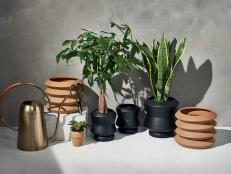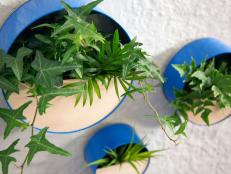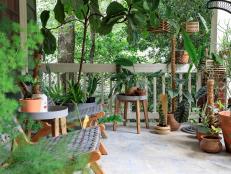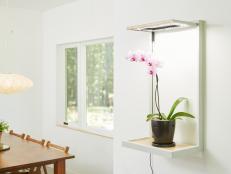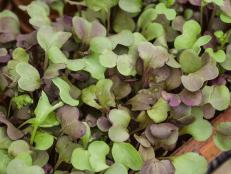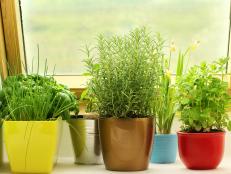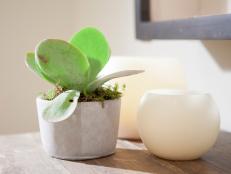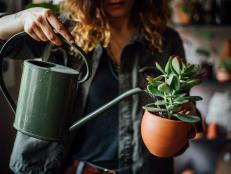Add Plants to Your Office Cubicle

Whether you work in a big office or a small cubicle, having healthy plants around you has been shown to increase productivity and decrease absenteeism. Cubicles are the icons of the working Joe, with each person's desk neatly partitioned off from their neighbor. Still, workers find a great way to create homey and comfortable settings, says master gardener Paul James. "More often than not, right next to the stapler and tape dispenser is something equally important to a well-functioning workspace: plants."
According to office gardener Lori Ann Asmus, there are many benefits to having live plants in this kind of environment. "It's very important to have beauty in your environment, particularly when you're in an area like this with all the gray cubicles and computers," she says. Fancy artwork on the walls collect dust, but beautiful live plants help to eliminate dust. Not only are plants able to absorb and transform toxins that can come from things like particleboard in the desks, fibers in the carpets or chemicals in the cleaning products, many plants are able to acclimate to the amount of light in the workspace. "There are quite a few plants that do very well just under fluorescent lighting," Asmus says.
Fluorescent lighting mimics natural light pretty well, which is why tropical and subtropical plants do so well in an environment with low levels of light. But there is such a thing as too much light for some plants. Some plants that are low-light-tolerant are going to bleach out a little under high-light conditions.
More light means that the plant is working harder and needs nutrients. Asmus recommends a balanced fertilizer for indoor containers, but be careful not to fertilize too much. You want enough to keep the plants green and growing, but not so much that the fertilizer begins to build up in the soil. "Anytime you're fertilizing plants indoors, I recommend using a half dose of whatever fertilizer you're going to use and to always stop fertilizing during the winter months, from about October to March.
One thing you won't stop, however, is watering. How much you water your office plants depends on the environment. If the lights are on 24 hours a day, seven days a week, that plant is working around the clock and will probably need to be watered often. Or, as in the case of a basement office, the lights are on only when people are in the office, and it's dark at night and on weekends.
"The plants aren't using as much water, and they're also not using as much fertilizer, so the frequency of your watering is probably going to be less," Asmus says. In other words, when you water, do so thoroughly, but you may only water every 10 to 14 days as opposed to every five or seven days in a high-light environment.
If you're concerned about gnats and spider mites invading your office plants, you should be, Paul says. "Lots of critters lay their eggs in a damp environment. You can eliminate that problem entirely by allowing the soil mix to dry out thoroughly between waterings. Mold shouldn't be a problem either, since most indoor potting mix is soil-less and resistant to mold."
Choosing a Plant for Your Office
When looking for an appropriate plant for your office space, there are a few things to consider. First, what kind of plant do you want to put in your office? There are a lot of colors, textures and different kinds of plants available to you.
- Consider the size of the plant and the size of the space. How tall or wide will the plant grow to be? Asmus suggests starting with a plant in a 6" pot. It's not too big, not too small and very forgiving in extreme situations.
- Don't expect flowers. Blooming plants such as bromeliads, orchids, miniature roses and hydrangeas aren't going to flower very long indoors. Plus, the pollen generated by the blooms can be a source of irritation for highly allergic co-workers nearby. You can cut the blooms off, but it's easier just to take the plant home and enjoy it there. Variegated foliage is much more long-lived and can be just as colorful.
- Choose a cool container.
Whatever you choose, surface bumpers placed on the underside of the containers will help eliminate scratches from rough pots or baskets. Cork mats protect surfaces nicely as well. When it comes to plants in the office, the bottom line is that a cleaner, greener work environment means healthier, happier, more productive employees.







